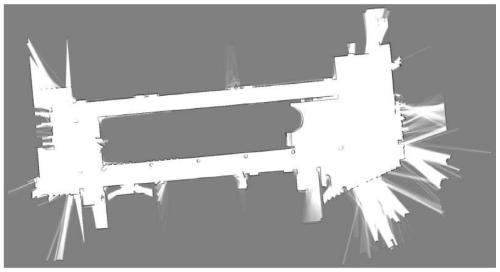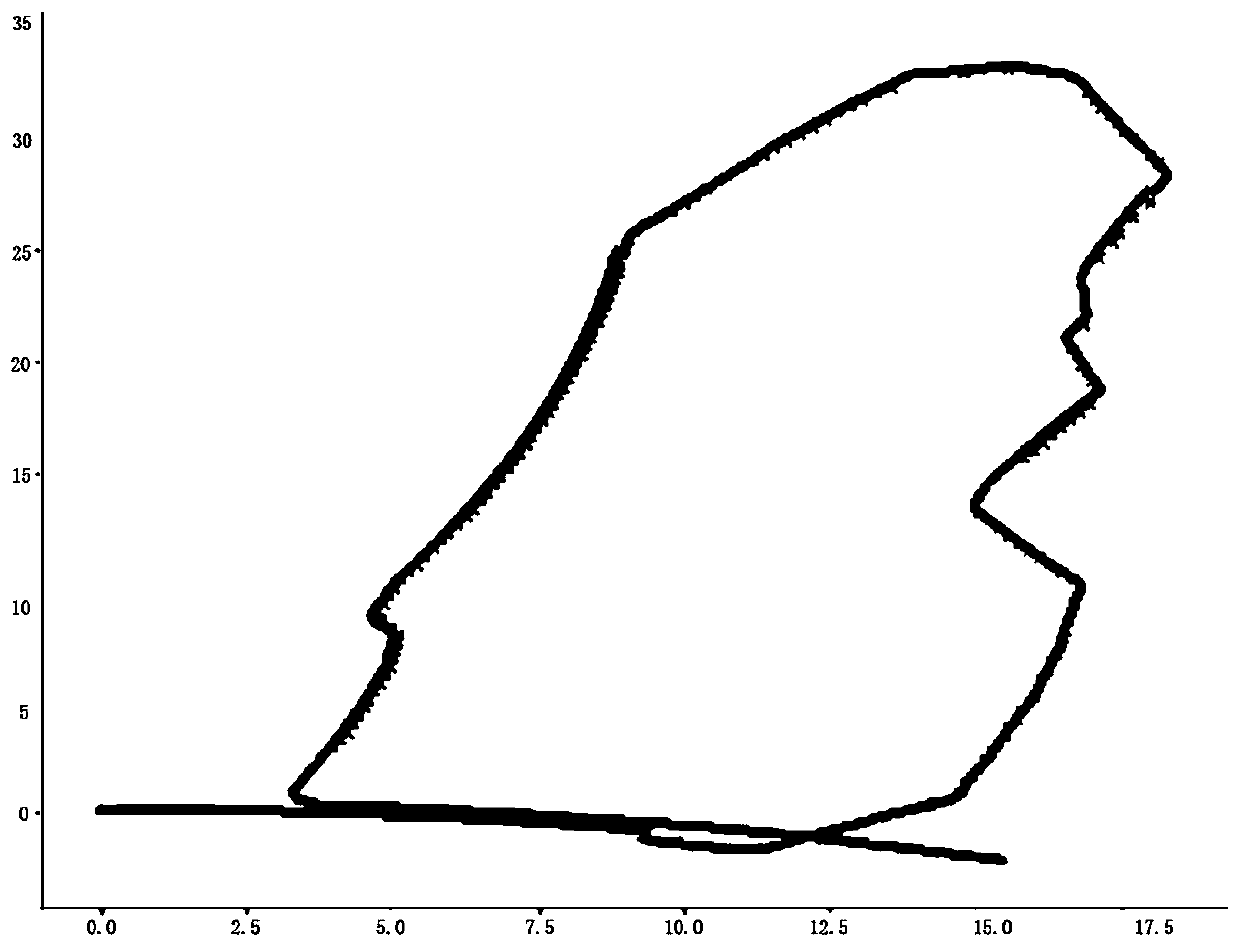Indoor positioning method based on single-line laser radar
A single-line laser radar and indoor positioning technology, which is applied in the direction of electromagnetic wave re-radiation, radio wave measurement system, measuring device, etc., can solve the problems of inconvenient use, difficult to achieve centimeter-level indoor positioning accuracy, and inability to apply positioning accuracy. The effect of precision indoor positioning
- Summary
- Abstract
- Description
- Claims
- Application Information
AI Technical Summary
Problems solved by technology
Method used
Image
Examples
Embodiment Construction
[0027] The technical solution of the present invention will be further described below in conjunction with the accompanying drawings.
[0028] The above-mentioned indoor positioning method based on single-line laser radar comprises the following steps:
[0029] (1) Use the data collected by the single-line lidar to construct an occupancy grid map. The single-line lidar will emit a laser beam in a fixed direction, and the emitted laser will be reflected when it encounters an obstacle, so that the laser can be obtained from the emission to the Based on the time difference received, the distance from the single-line lidar to the nearest obstacle in that direction can be calculated.
[0030] In the occupancy grid map, for a point, p(s=0) is used to represent the probability that it is an empty state, and p(s=1) is used to represent the probability that it is an occupied state, and the sum of the two is 1. Here, the ratio of the two is introduced as the state of the point: Odd(s)=...
PUM
 Login to View More
Login to View More Abstract
Description
Claims
Application Information
 Login to View More
Login to View More - R&D
- Intellectual Property
- Life Sciences
- Materials
- Tech Scout
- Unparalleled Data Quality
- Higher Quality Content
- 60% Fewer Hallucinations
Browse by: Latest US Patents, China's latest patents, Technical Efficacy Thesaurus, Application Domain, Technology Topic, Popular Technical Reports.
© 2025 PatSnap. All rights reserved.Legal|Privacy policy|Modern Slavery Act Transparency Statement|Sitemap|About US| Contact US: help@patsnap.com



